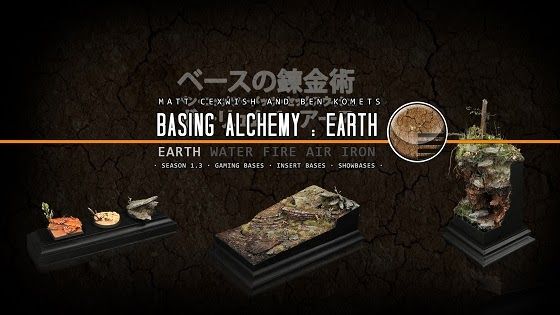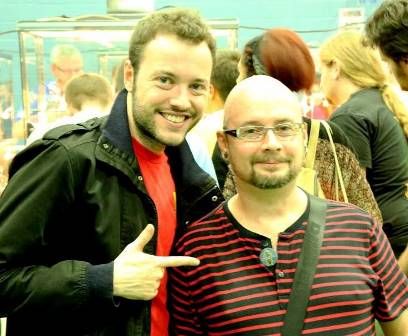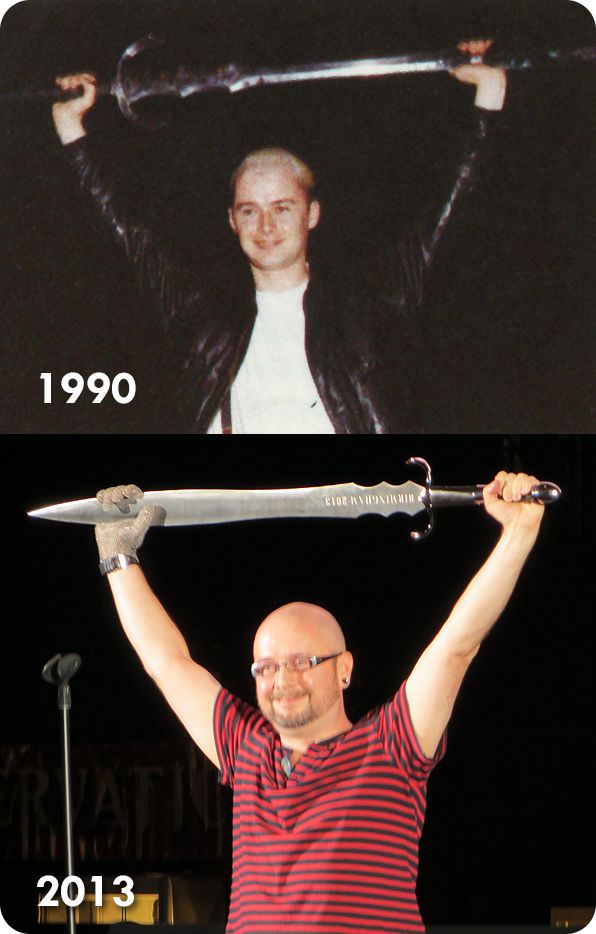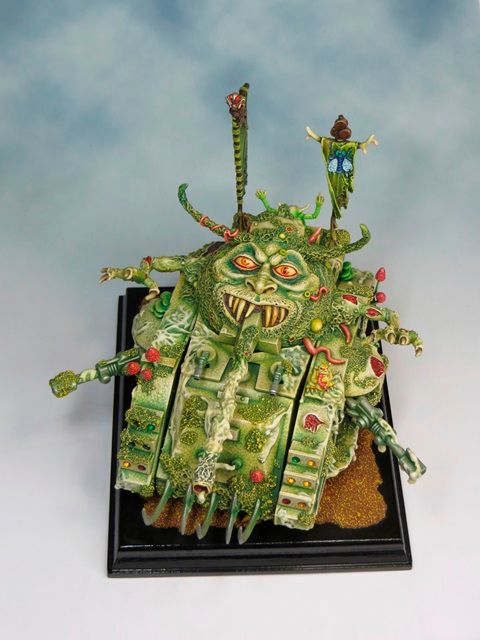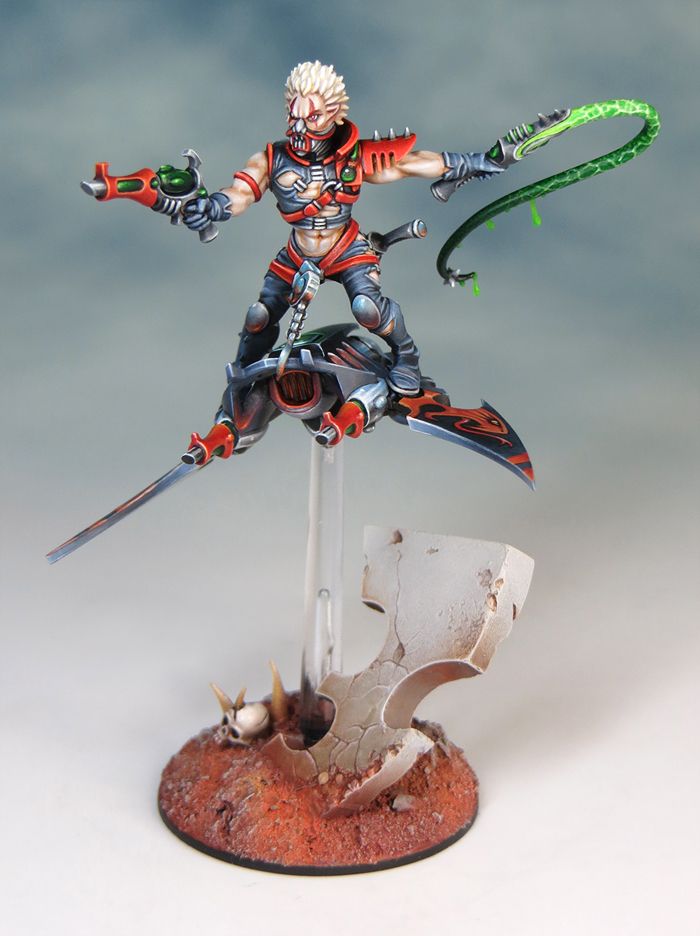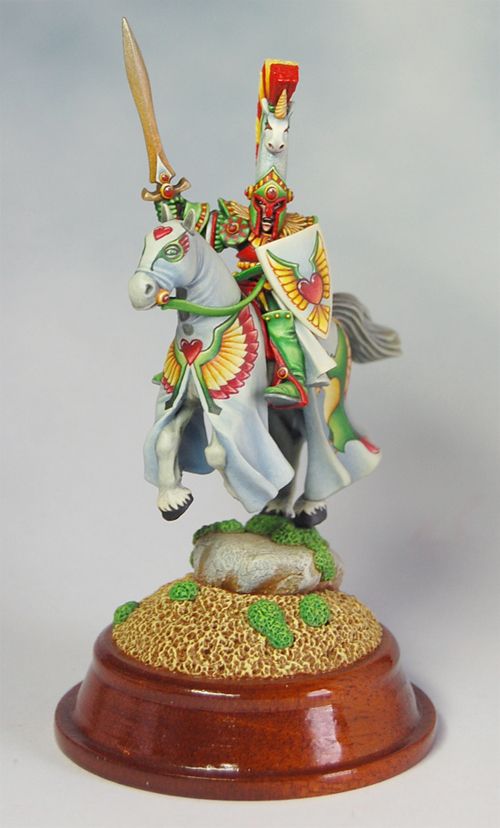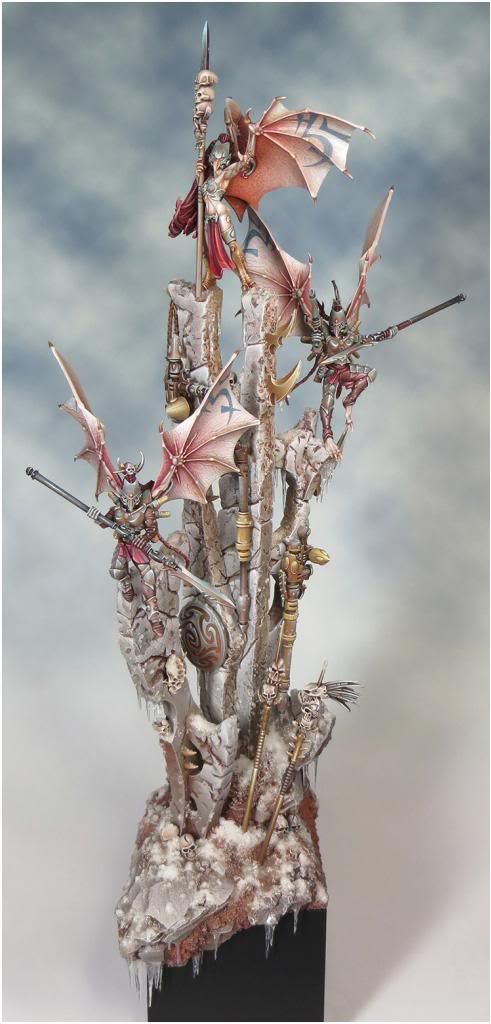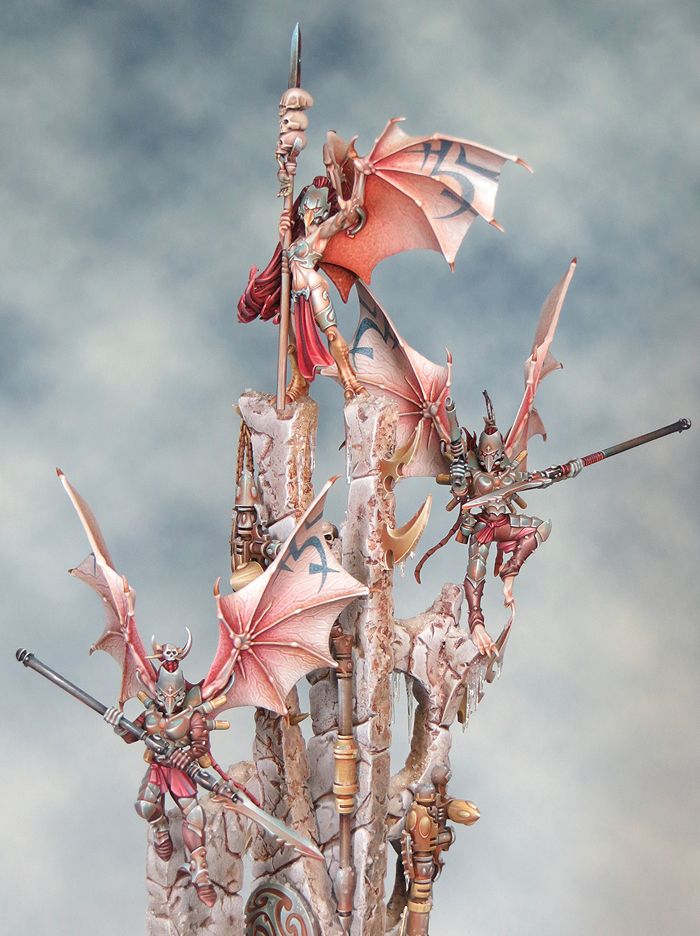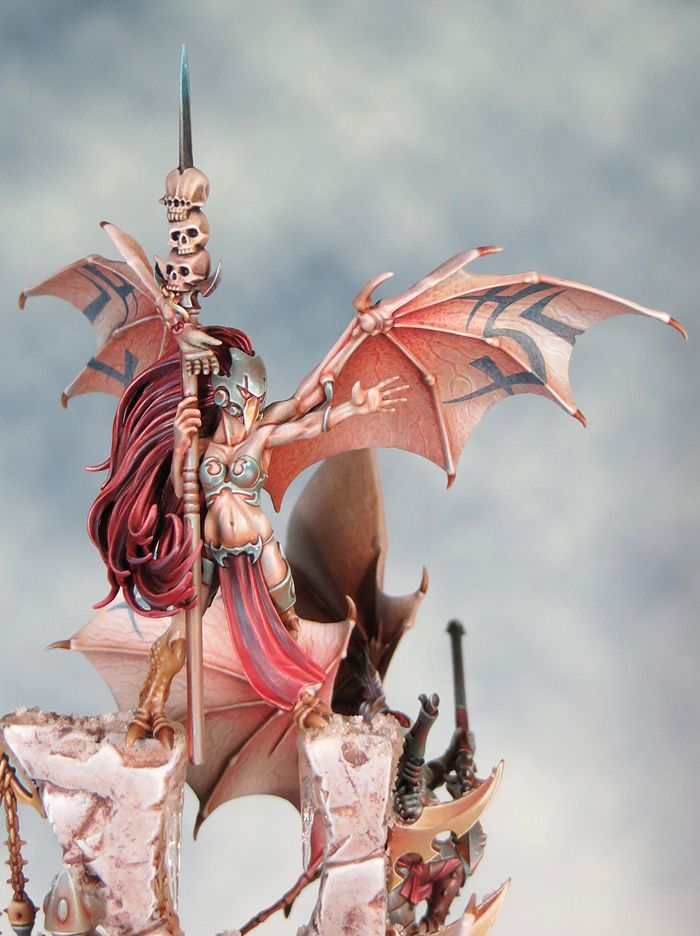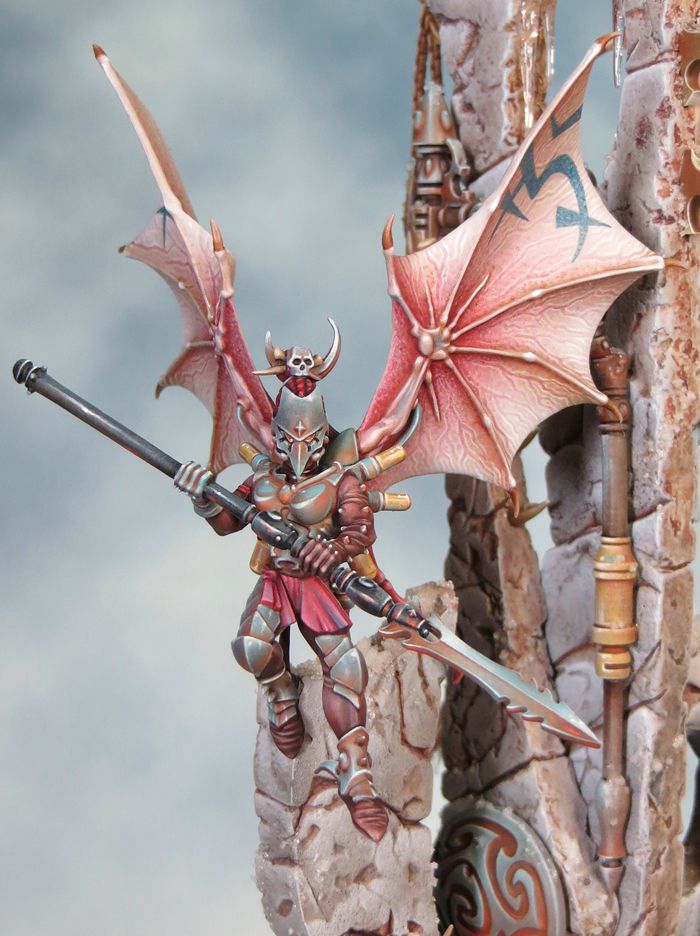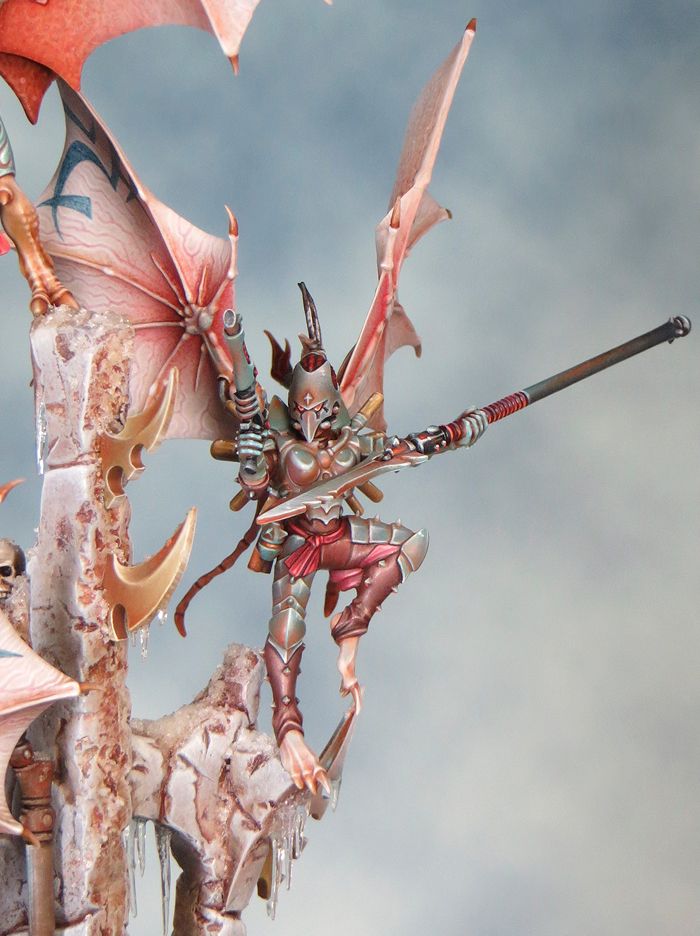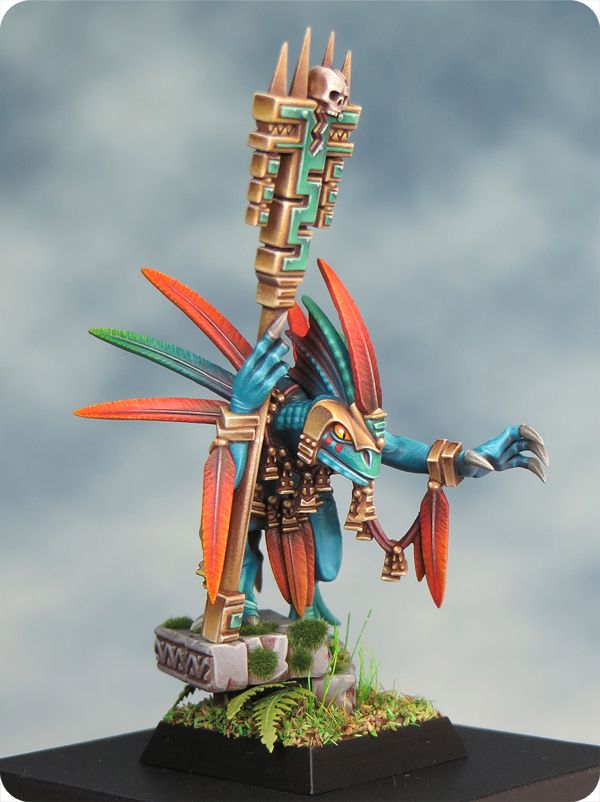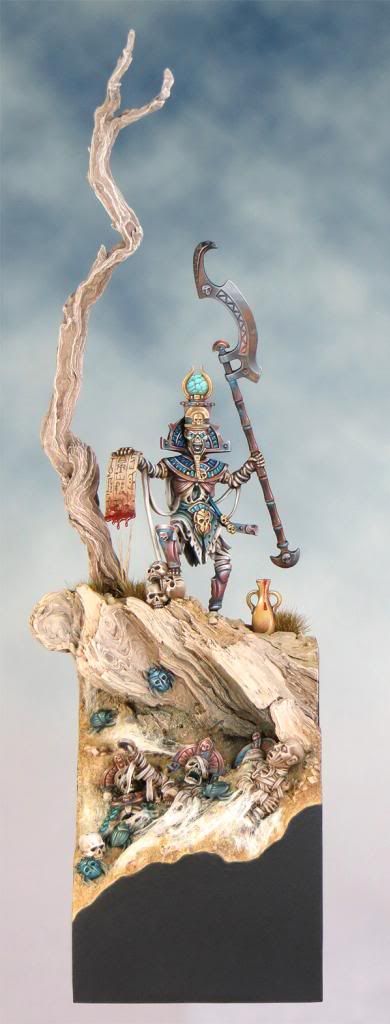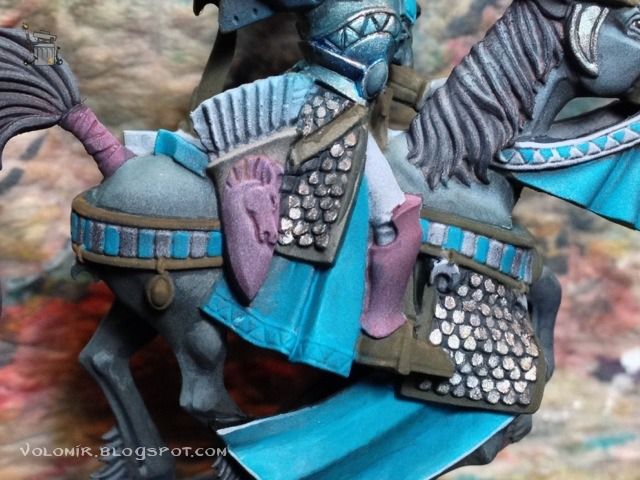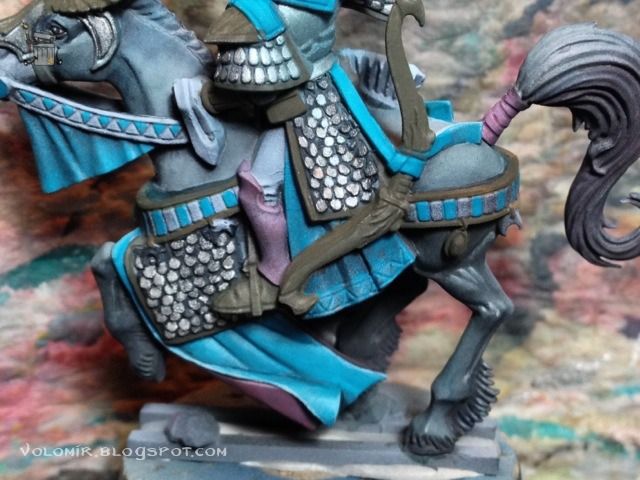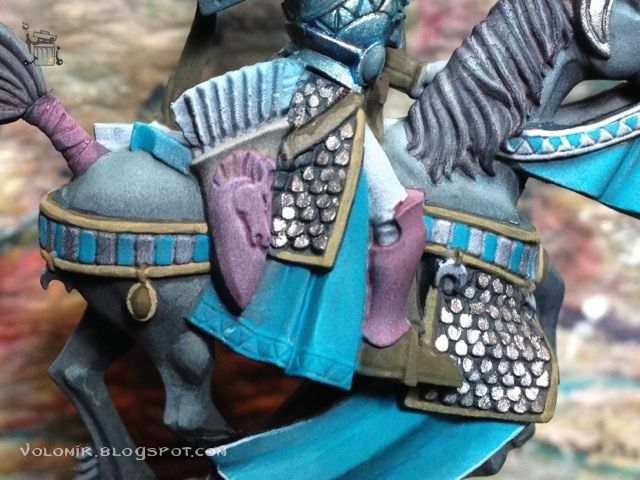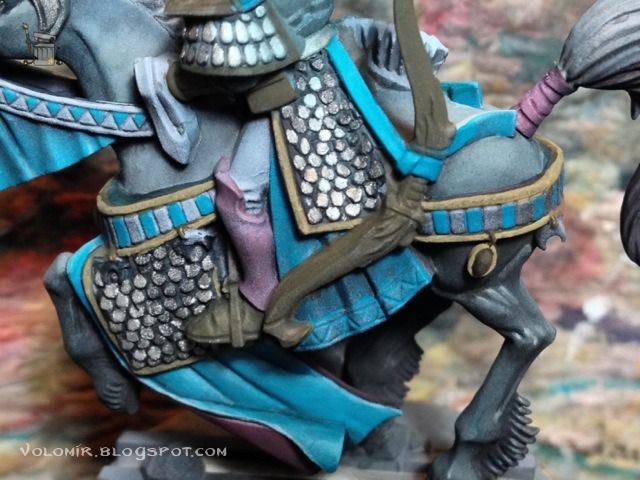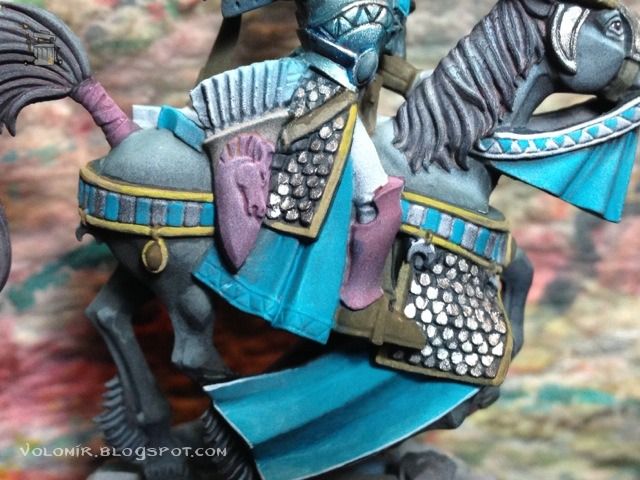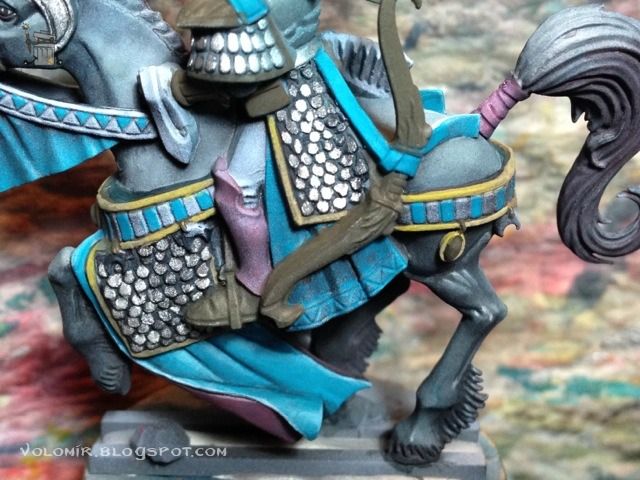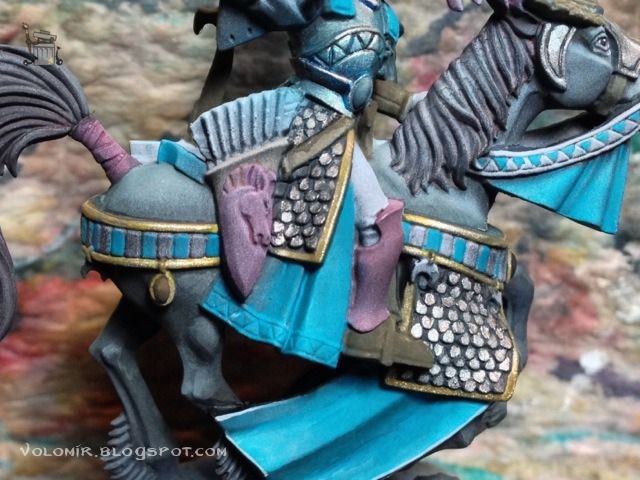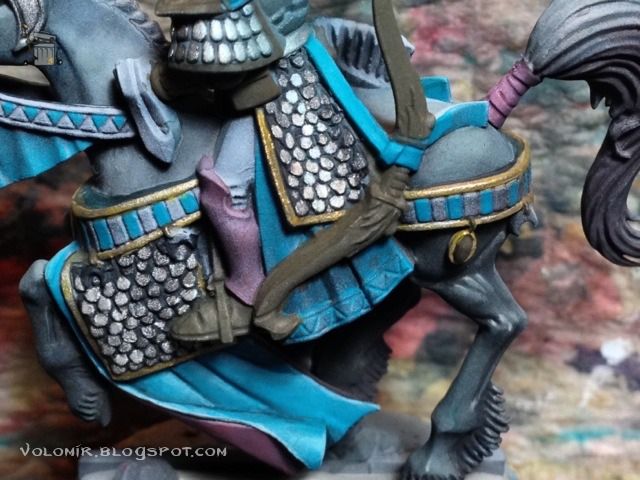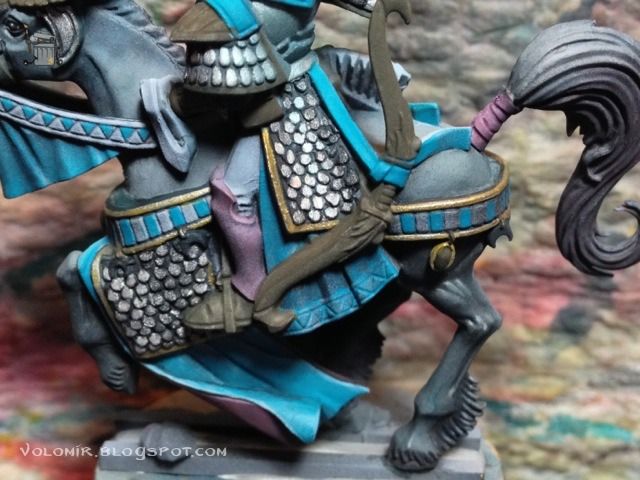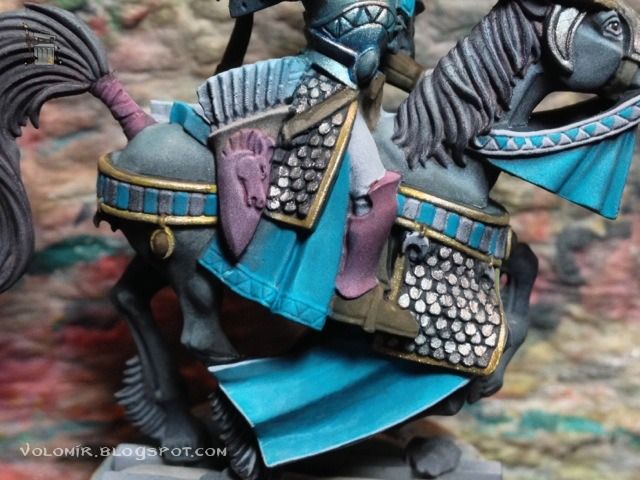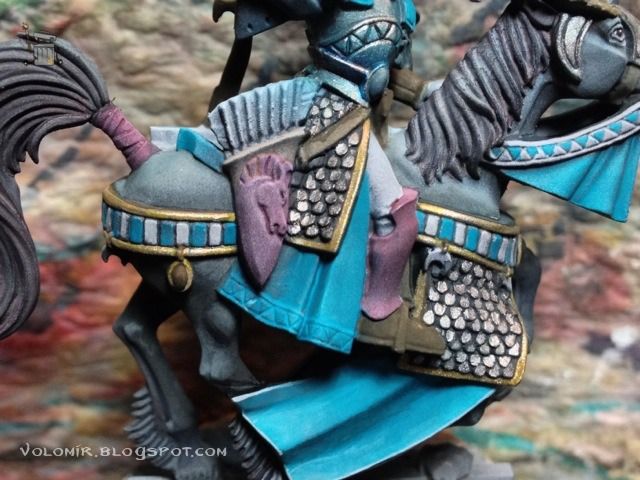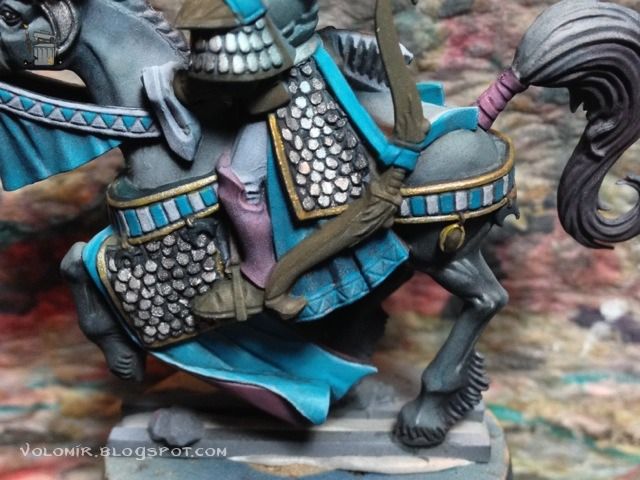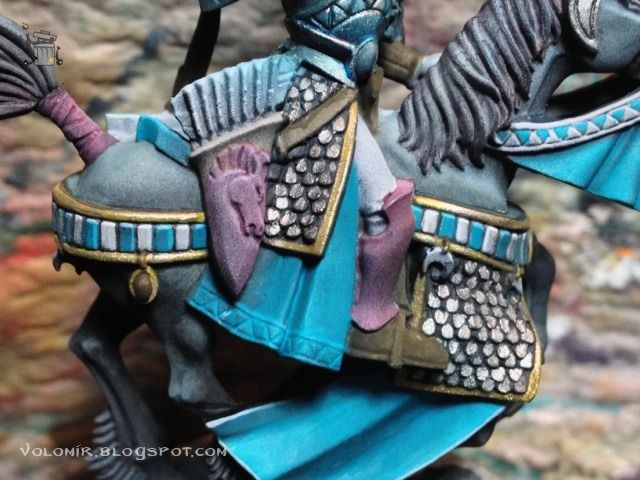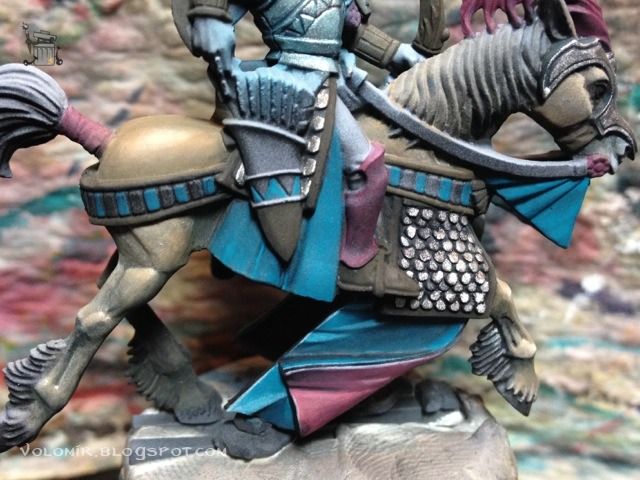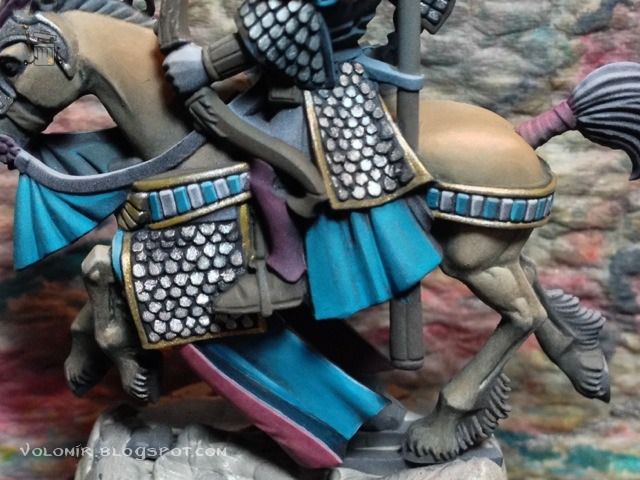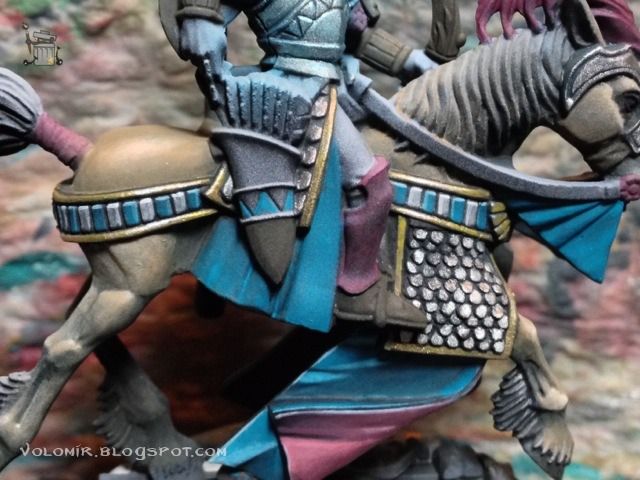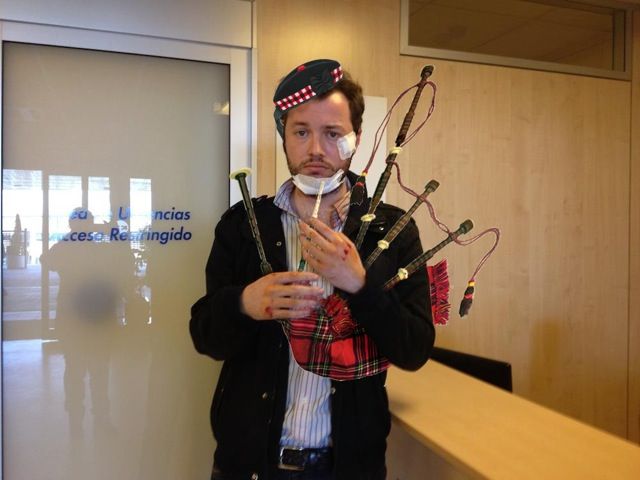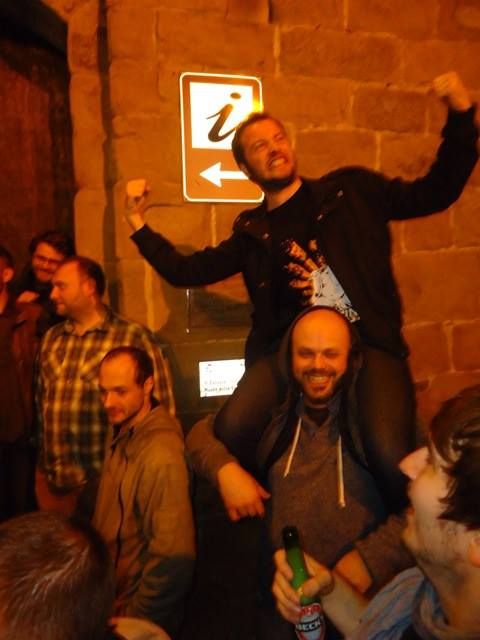As you know, every year I try to conduct interviews to the Slayersword winners of the past year. Although Games Workshop plans to destroy the contest entirely (at least from what we have been witnessing lately), 2013 was still a Golden Demon year. Therefore, today I have the enormous pleasure of spending some time asking a few questions to my beloved Roman Lappat. He was the winner of Slayersword Germany 2013, the first of the season, and possibly the most espectacular of them all. He is one of the most well known painters of late, patron and founder of Massive Voodoo, also the most well known blog around our miniature obsession.
Volomir:
Roman, it is a pleasure to have you here today, I am very excited to hear your thoughts as I am a big fan of your work since the very early days of Massive Voodoo. And when I finally had the chance to meet you, we became very good friends, so it is even more important for me! Please tell us a bit about yourself for the people that still don’t know about you. Can you tell us when did you decide to become an artist and why painting miniatures?
Roman:
Hey Rafael, my pleasure to sit down with you virtually to answer your questions. Well said, I am also very happy to call you a friend. I can just give your compliments straight back to you as I do like your work very much. My name is Roman Lappat and I am fulltime figure painter and painting class teacher. I decided to make a living from my passion back in the end of 2006 and started with painting armies on comission. Meanwhile, after I painted over 2000 figures I gained much experience when it comes to Miniature Painting and so also my fields of work has changed. I do not paint armies anymore, only do single individual showcase pieces as comission work. I do not call myself an artist, I rather leave that to others and I am thankful if someone else thinks what I am doing is art. For me it is my daily passion and work.

Volomir:
We know you are a professional artist, but have you learnt to paint miniatures all by yourself? Is it very different from other kinds of art? Have you attended courses, or do you have some sort of personal master?
Roman:
Well, you already got my thoughts about the artist thing. Yes, I am a self-thaught painter. For sure I have learnt a lot from other painters but the most important parts of what I today know about miniature painting happened while I was sitting at my table working with colours and the brush. There I had many "Click-moments" where I did start to understand how everything from all the massive tutorials the internet is offering comes together. There is for sure a connection to other sorts of Art when it comes to Figure painting. The way you work with colours, the way you can work with light situation, the way the decision of your colour choices influances all of the piece and much more. Like I said, it all comes together when you paint and train your skills hard. Sometimes I find myself in days where I don't have to think about something while painting. No rules or instructions in my head, just the flow of painting at all goes well, because I have done it so very often. So far I did take part in one class by another painter, Stephan Rath from Germany. This was two years ago and was really interesting to see his way of painting figures. In my early beginnings I did not take part in classes as there just was none offered close to my hometown. I was happy to get to know some local painters who answered my annoying questions frequently. A personal master? Mmh ... though question. I do like to see figures painted by others and I really enjoy the variety of personal styles that appear if you look close enough. That variety is so big that I can not really point out a favourite master in the figure painting scene. Even if a piece is not painted to perfection I do enjoy to see good and vibrant ideas in projects and this sums up the miniatures I like to an uncountable number. As true masters I see painters from Art History from ancient times to now. There is so much to learn and it never stops when you study true artwork.

Volomir:
Do you think Internet tutorials are enough to learn about painting or do we need something else?
Roman:
Mmh, I think Internet Tutorials are a great start as if they are provided for free everybody is able to get hold of the information provided and can try it at home. Make some experience on his own which is most important, but internent tutorials just can teach you to a certain point. Sometimes it is also good to see techniques used in real, for example during a painting class where the student is also trained in the techniques. After you have seen and studied someone else's way of painting you will read tutorials different again. Just depending on the skill level of each individual. So I am very happy that the miniature world is filled with painters who provide classes worldwide to spread knowledge and their personal experience. This helps the painting results and skill rise. DVD's are also a very nice thing to learn from, but same here I allow myself to say that you just learn to a certain point. During a class there is time to ask questions and get well founded answers while during a session where you watch a DVD you are stuck to the information which is provided by the producer. Also the painters community is growing and I can speak for Germany and Austria, where I know a lot of friends and other painters who gather up regularly to paint. During these painter's meeting, friendship is found, improvement and exchange is made and having this regularly provides a nice learning curve for everybody involved.

Volomir:
How did you decide to create Massive Voodoo? How was it that Massive Voodoo became so big? Tell us the secret of your success!
Roman:
In the beginning of my "career" I was working hard in about four to five german forums and exchanged a lot of my recently made experiences to those interested. As a lot of questions dropped in this became very big after two years and the unpaid work of answering as much as I can brought me close to some kind of burnout. I decided to make my own webpage then and planned stop doing so much in the forums. Back in those days I just meet my very good friend Raffale Picca and he was much more into the Internet-things than I was. As I asked him about some help with my own page he said I should consider starting a blog on my own. A daily diary. I really enjoyed that idea and I did choose the name "Massive Voodoo" from my belly. The blog was started and I was alone posting there. Soon I felt lonely and started to invite some really close friends to it to have a living room to exchange ideas and thoughts and finished miniatures with eachother, even there are large distances between some of us. Well, there has not been a big plan about that since then, just the joy of happy painting and spreading the word about one of the greatest hobbies on this planet. I guess MV became so big as everybody involved is still a normal person who tries to live his "hobby" as good as he/she can. Another important thing on MV is still the help we provide to other painters, sometimes via the blog (articles, FAQ, etc.) but most of them happen behind the curtain when tons of emails are answered with painting experience. I don't think there is a secret behind the success of MV. It is just a place to meet kind painters and enjoy the spirit of happy painting together, in good and bad times.

Volomir:
You are a very productive painter. We’ve seen lots of your miniatures in the past few years. Which work of yours is your favourite?
Roman:
Though question again. When I look back on what I have painted so far I can not name one single piece of my own that is my favourite. My gallery on CMON is filled with over 500 uploads and these are definatly not all the figures I painted. Really hard to tell. I guess I painted over 2000 figures since the end of 2006 and now I shall name one. I am not able to. I have a lot of pieces where I brought a lot of personal emotions in like I used to do on canvas while I was painting more canvas pieces than miniatures. For me at the moment, I would carefully name the diorama "The Last Light" as one of my favourites by my own as there is a lot of personal emotion to be found in it. In every project you learn about yourself and your character when the project is a challenge for you. So did I with the Diorama of the Blood Angels and the Tyranids. I learnt to reach my own borders and go beyond them with strength, pain, fun and tears. That makes me very proud and I never was as proud on a figure project like I am with this one. So far.

Volomir:
The Last Light is an absolutely crazy piece. Where did you find the strength to work on such a huge project? Haven’t you gone mad with it?
Roman:
Those who have read the step by step article over on MV might have recognised that I was close to madness. The strength was found in my soul and in my passion. I also wanted to proof myself to achieve my goals. This is truely hard to describe what was going on inside me during those 3~4 months while I was putting 450 hours + in that piece. I can't describe it, but what I can say is that madness was close, really close and I learnt during the project: If madness is smiling at you from a deep darkness than it is best to smile back and invite to a dance!" I hope this answers this question properly.

Volomir:
I think your diorama has beaten the world record in Fantasy painting regarding the number of miniatures in a single artwork. Do you think someone will try to create a bigger diorama with more minis? Is that even possible for a normal sane person?
Roman:
Yeah why not, everybody can do that if he finds the guts to push through madness and beyond and has the will to be very disciplined about his goals. While I created that piece I knew something like that was not done before and I really enjoy the thought of inspiring people with it. I am looking forward what the inspiration I might have planted in other brains might come up with in the future. I already have some more plans with even more figures in a single diorama in my mind but as I have seen the hell behind creation of such a piece I am carefully smiling about those ideas and wait for the right time to come to create them.

Volomir:
Who are your favourite miniature painters and which would you consider the best or more inspiring miniatures of all time in your opinion?
Roman:
I can only speak for myself and from my point of view. There are so many great and inspiring painters outthere that I am not able to tell who is my favourite right now. I would say everybody who paints figures is my favourite painter as everybody shares the love and passion and spreads the word about this beautiful hobby. Back when I started I was inspired by painters like rusto, automaton, Yellow One, JMPN, Volomir, Jeremie Bonamont, Banshee, Georc, Bestienmeister, Ben Komets and many, many, many more that I am not able to list here. I am still inspired by so many painters that this list would also grow too big.

Volomir:
We have seen you participating in contests and events in many countries, but I don’t think you have ever visited us in Spain. Are you planning to do it in the near future?
Roman:
Yes I do and I hope I am able to do so soon, but my calendar is always packed with painting class weekends to stay alive and travelling always costs. Additional to that I also have a normal life, a great girlfriend, family and friends I want to find time with to cherish life.

Volomir:
And finally, last but not least. I’m sure any painter new to the hobby is eager to hear some counsel from you. Do you have anything to say to help someone who is starting now and would love to become a master painter someday? Would you recommend others making it a way of life and becoming professional?
Roman:
To someone who just starts with the hobby of miniature painting I can say: Don't compare your work with others, never. You will quickly feel bad or unworthy and that is very, very stupid and wrong. Everybody is equal in this miniature painting community. When you see the progress you make in painting figures as a muscle you should know that you can train those. In fact they will only grow by training and it is the same with your painting skills. Many painters these days are way beyond good painters and do amazing stuff but everybody trained hard for it. Don't think you can reach this point very quick without training and learning from it. This won't happen. Give yourself the time you need to make your muscles grow and have fun while doing so. With fun in your heart you learn much more easier than without it. I would also recommend staying put in becoming better but I don't like the impression of the word "master painter". I think this word puts so much pressure on newbies to the hobby that some are so much fasscinated by the thought of becoming master, but might just find grief and anger while trying to learn how to train their muscles. Let's say there are more experienced painters and some are more unexperienced. Experience can only be found in training what you want to improve. Now back to the table and the brush :D
Becoming a professional is a though decision. Professional means you are trying to make a living from it and I would rather not recommend that to anyone as first it means struggling. The way of a self employed "artist" does not offer much security in life. This feeling of security can be found in other jobs but definatly not in this one. It's again a question of passion and guts.
I was completely sure that this was going to be an absolutely amazing interview with great thoughts spread out there and lots of happy painting. Roman you are a great painter but much greater friend, and it's been both a great pleasure and honour to have you here in Volomir's Blog sharing your Massive Voodoo. Here's to many years of "Massive Volomir"! :)


